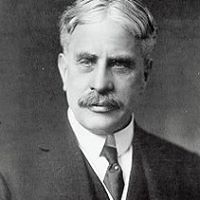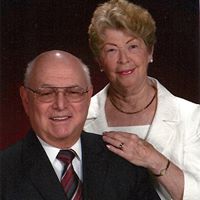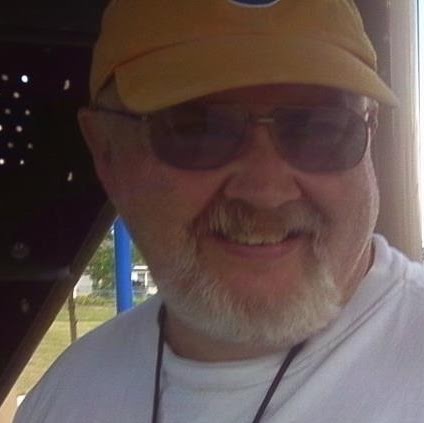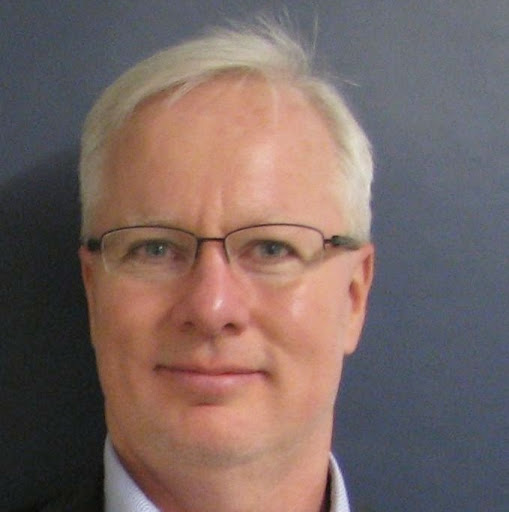Robert Phillips Laird
age ~81
from Eugene, OR
- Also known as:
-
- Robert P Laird
- Robert D Laird
- Robert R Laird
- Robert Laird Phillips
- Laird P Robert
- Duncan Laird
- Laird Duncan
Robert Laird Phones & Addresses
- Eugene, OR
- 429 Mallard Dr, Santa Rosa, CA 95401
- San Francisco, CA
- Sebastopol, CA
- 1617 35Th Ave, Portland, OR 97214
- Berkeley, CA
Work
-
Address:5050 Ne Hoyt St, Portland, OR 97213
-
Specialities:Ophthalmologist
Education
-
School / High School:Oregon Health Sciences University1968
Languages
English
Awards
Healthgrades Honor Roll
Ranks
-
Certificate:Ophthalmology, 1976
Specialities
Ophthalmology
Real Estate Brokers

Robert Laird, Vancouver WA Agent
view sourceWork:
Coldwell Banker
Vancouver, WA
3608927325 (Phone)
Vancouver, WA
3608927325 (Phone)
Medicine Doctors

Dr. Robert J Laird, Portland OR - MD (Doctor of Medicine)
view sourceSpecialties:
Ophthalmology
Address:
5050 Ne Hoyt St Suite 445, Portland, OR 97213
5032310166 (Phone), 5032312720 (Fax)
5032310166 (Phone), 5032312720 (Fax)
Certifications:
Ophthalmology, 1976
Awards:
Healthgrades Honor Roll
Languages:
English
Education:
Medical School
Oregon Health Sciences University
Graduated: 1968
Medical School
U Oreg Hosp
Graduated: 1968
Medical School
University Of Miami Hospital
Graduated: 1968
Medical School
Moorfields Eye Hosp
Graduated: 1968
Oregon Health Sciences University
Graduated: 1968
Medical School
U Oreg Hosp
Graduated: 1968
Medical School
University Of Miami Hospital
Graduated: 1968
Medical School
Moorfields Eye Hosp
Graduated: 1968

Robert Harold Laird
view sourceSpecialties:
Pediatrics
Pediatric Adolescent Medicine
Pediatric Adolescent Medicine
Education:
University of Tennessee (1968)

Robert J Laird, Portland OR
view sourceSpecialties:
Ophthalmologist
Address:
5050 Ne Hoyt St, Portland, OR 97213
Education:
Oregon Health and Science University, School of Medicine - Doctor of Medicine
Moorfields Eye Hospital - Fellowship - Cornea and External Diseases
University of Miami Hospital - Residency - Ophthalmology
Moorfields Eye Hospital - Fellowship - Cornea and External Diseases
University of Miami Hospital - Residency - Ophthalmology
Board certifications:
American Board of Ophthalmology Certification in Ophthalmology
Us Patents
-
Ribbed Electrodes And Methods For Their Use
view source -
US Patent:6533780, Mar 18, 2003
-
Filed:Oct 23, 2000
-
Appl. No.:09/925501
-
Inventors:Robert J. Laird - Richmond CA
Frank W. Ingle - Palo Alto CA
Garry L. Carter - Pleasanton CA
Timothy G. Dietz - Fremont CA -
Assignee:SURx, Inc. - Livermore CA
-
International Classification:A61B 1818
-
US Classification:606 41, 606 23, 606 28, 606 31, 606 50, 607 96, 607101, 607102, 607105
-
Abstract:The invention provides improved devices, methods, and systems for shrinking of collagenous tissues, particularly for treating urinary incontinence in a noninvasive manner by directing energy to a patients own support tissues. This energy gently heats fascia and other collagenous support tissues, causing them to contract. The energy will preferably be applied between a pair of large plate electrodes having cooled flat electrode surfaces separated by an insulating rib or film. Such cooled plate electrodes are capable of directing electrical energy through an intermediate tissue and into fascia while the cooled electrode surface prevents injury to the intermediate tissue.
-
Noninvasive Devices And Methods For Shrinking Of Tissues
view source -
US Patent:6546934, Apr 15, 2003
-
Filed:Aug 30, 2000
-
Appl. No.:09/651435
-
Inventors:Frank Ingle - Palo Alto CA
Garry L. Carter - Pleasanton CA
Robert J. Laird - Richmond CA
Paul Do - San Jose CA
Brian J. Mosel - Dublin CA
Michael D. Laufer - Menlo Park CA
Loren L. Roy - Scotts Valley CA -
Assignee:SURx, Inc. - Livermore CA
-
International Classification:A61B 1900
-
US Classification:128898, 606 41, 607138
-
Abstract:The invention provides improved devices, methods, and systems for shrinking of collagenated tissues, particularly for treating urinary incontinence in a noninvasive manner by directing energy to a patients own support tissues. The energy can be applied intermittently, often between a pair of large plate electrodes having cooled flat electrode surfaces, the electrodes optionally being supported by a clamp structure. Such cooled plate electrodes are capable of directing electrical energy through an intermediate tissue and into fascia while the cooled electrode surface prevents injury to the intermediate tissue, particularly where the electrode surfaces are cooled before, during, and after an intermittent heating cycle.
-
Noninvasive Devices, Methods, And Systems For Shrinking Of Tissues
view source -
US Patent:6558381, May 6, 2003
-
Filed:Jan 19, 2001
-
Appl. No.:09/765923
-
Inventors:Frank Ingle - Palo Alto CA
Garry L. Carter - Pleasanton CA
Robert J. Laird - Richmond CA
John P. Claude - San Carlos CA
Paul Do - San Jose CA
Brian J. Mosel - Dublin CA -
Assignee:SURx, Inc. - Pleasanton CA
-
International Classification:A61B 1818
-
US Classification:606 41, 607102, 607105, 606 28
-
Abstract:The invention provides improved devices, methods, and systems for shrinking of collagenated tissues, particularly for treating urinary incontinence in a noninvasive manner by directing energy to a patients own support tissues. This energy heats fascia and other collagenated support tissues, causing them to contract. The energy can be applied intermittently, often between a pair of large plate electrodes having cooled flat electrode surfaces, the electrodes optionally being supported by a clamp structure. Such cooled plate electrodes are capable of directing electrical energy through an intermediate tissue and into fascia while the cooled electrode surface prevents injury to the intermediate tissue, particularly where the electrode surfaces are cooled before, during, and after an intermittent heating cycle. Ideally, the plate electrode comprises an electrode array including discrete electrode surface segments so that the current flux can be varied to selectively target the fascia. Alternatively, chilled âliquid electrodesâ may direct current through a selected portion of the bladder (or other body cavity) while also cooling the bladder wall, an insulating gas can prevent heating of an alternative bladder portion and the adjacent tissues, and/or ultrasound transducers direct energy through an intermediate tissue and into fascia with little or no injury to the intermediate tissue.
-
Noninvasive Devices, Methods, And Systems For Shrinking Of Tissues
view source -
US Patent:6629535, Oct 7, 2003
-
Filed:Jan 23, 2001
-
Appl. No.:09/768985
-
Inventors:Frank Ingle - Palo Alto CA
Garry L. Carter - Pleasanton CA
Robert J. Laird - Richmond CA
John P. Claude - San Carlos CA
Paul Do - San Jose CA
Brian J. Mosel - Dublin CA -
Assignee:SURx, Inc. - Livermore CA
-
International Classification:A61B 1900
-
US Classification:128898, 607101, 607105, 606 41
-
Abstract:The invention provides improved devices, methods, and systems for shrinking of collagenated tissues, particularly for treating urinary incontinence in a noninvasive manner by directing energy to a patients own support tissues. This energy heats fascia and other collagenated support tissues, causing them to contract. The energy can be applied intermittently, often between a pair of large plate electrodes having cooled flat electrode surfaces, the electrodes optionally being supported by a clamp structure. Such cooled plate electrodes are capable of directing electrical energy through an intermediate tissue and into fascia while the cooled electrode surface prevents injury to the intermediate tissue, particularly where the electrode surfaces are cooled before, during, and after an intermittent heating cycle. Ideally, the plate electrode comprises an electrode array including discrete electrode surface segments so that the current flux can be varied to selectively target the fascia. Alternatively, chilled âliquid electrodesâ may direct current through a selected portion of the bladder (or other body cavity) while also cooling the bladder wall, an insulating gas can prevent heating of an alternative bladder portion and the adjacent tissues, and/or ultrasound transducers direct energy through an intermediate tissue and into fascia with little or no injury to the intermediate tissue.
-
Noninvasive Devices, Methods, And Systems For Shrinking Of Tissues
view source -
US Patent:6976492, Dec 20, 2005
-
Filed:Jan 7, 2003
-
Appl. No.:10/338193
-
Inventors:Frank Ingle - Palo Alto CA, US
Garry L. Carter - Pleasanton CA, US
Robert J. Laird - Richmond CA, US
John P. Claude - San Carlos CA, US
Paul Do - San Jose CA, US
Brian J. Mosel - Dublin CA, US -
Assignee:Solarant Medical, Inc. - Livermore CA
-
International Classification:A61B019/00
-
US Classification:128898, 606 41, 607101, 607105
-
Abstract:The invention provides improved devices, methods, and systems for shrinking of collagenated tissues, particularly for treating urinary incontinence in a noninvasive manner by directing energy to a patient's own support tissues. This energy heats fascia and other collagenated support tissues, causing them to contract. The energy can be applied intermittently, often between a pair of large plate electrodes having cooled flat electrode surfaces, the electrodes optionally being supported by a clamp structure. Such cooled plate electrodes are capable of directing electrical energy through an intermediate tissue and into fascia while the cooled electrode surface prevents injury to the intermediate tissue, particularly where the electrode surfaces are cooled before, during, and after an intermittent heating cycle. Ideally, the plate electrode comprises an electrode array including discrete electrode surface segments so that the current flux can be varied to selectively target the fascia. Alternatively, chilled “liquid electrodes” may direct current through a selected portion of the bladder (or other body cavity) while also cooling the bladder wall, an insulating gas can prevent heating of an alternative bladder portion and the adjacent tissues, and/or ultrasound transducers direct energy through an intermediate tissue and into fascia with little or no injury to the intermediate tissue.
-
Tissue Localizing And Separating Assembly
view source -
US Patent:6994677, Feb 7, 2006
-
Filed:Feb 25, 2003
-
Appl. No.:10/374583
-
Inventors:Eric L. Buehlmann - Redwood City CA, US
Lisanne A. Eng - San Mateo CA, US
Christine P. Ventura - San Jose CA, US
Robert J. Laird - Pinole CA, US
Frank Ingle - Palo Alto CA, US -
Assignee:Artemis Medical, Inc. - Hayward CA
-
International Classification:A61B 10/00
-
US Classification:600567, 606 45
-
Abstract:A tissue localizing and separating assembly comprises a shaft, having a distal shaft portion, and a tissue separator device extending along the shaft. The tissue separator device has a distal separator part at the distal shaft portion movable between a retracted state, towards the distal shaft portion, and an outwardly extending, operational state, away from the distal shaft portion. A tissue localization assembly has a radially-expandable end. An elongate coupler may be used to dock the tissue localization assembly to the tissue separator device.
-
Ribbed Electrodes And Methods For Their Use
view source -
US Patent:7004942, Feb 28, 2006
-
Filed:Jan 23, 2003
-
Appl. No.:10/351245
-
Inventors:Robert J. Laird - Richmond CA, US
Frank W. Ingle - Palo Alto CA, US
Garry L. Carter - Pleasanton CA, US
Timothy G. Dietz - Fremont CA, US -
Assignee:Solarant Medical, Inc. - Livermore CA
-
International Classification:A61B 18/18
-
US Classification:606 50, 606 23, 606 28, 606 41, 607 96, 607101
-
Abstract:The invention provides improved devices, methods, and systems for shrinking of collagenous tissues, particularly for treating urinary incontinence in a noninvasive manner by directing energy to a patient's own support tissues. This energy gently heats fascia and other collagenous support tissues, causing them to contract. The energy will preferably be applied between a pair of large plate electrodes having cooled flat electrode surfaces separated by an insulating rib or film. Such cooled plate electrodes are capable of directing electrical energy through an intermediate tissue and into fascia while the cooled electrode surface prevents injury to the intermediate tissue.
-
Target Tissue Localization Assembly And Method
view source -
US Patent:7150712, Dec 19, 2006
-
Filed:Aug 5, 2002
-
Appl. No.:10/212467
-
Inventors:Eric L. Buehlmann - Redwood City CA, US
Robert J. Laird - Pinole CA, US
William R. Dubrul - Redwood City CA, US -
International Classification:A61B 1/00
-
US Classification:600114, 600567
-
Abstract:A target tissue localization assembly includes a radially expandable tissue anchor connected to the distal ends of an anchor assembly and an elongated anchor actuator element. A lock, engageable between the actuator element and the placement element, may be used to prevent collapse of the anchor from its radially expanded state. A sheath may be slidably mounted over the anchor assembly. The sheath and the anchor assembly may be configured to permit the sheath to move in a proximal direction, relative to the anchor assembly, past a chosen location while preventing the sheath from moving past the chosen location in a distal direction.
Resumes

Financial Services Manager At Hyundai Of Everett
view sourcePosition:
Financial Services Manager at Hyundai of Everett
Location:
Lake Stevens, Washington
Industry:
Automotive
Work:
Hyundai of Everett since Jan 2004
Financial Services Manager
Olympic Ford of Marysville Jun 1998 - Jan 2004
Financial Services Manager
Laird's Stationery Jun 1977 - Dec 1991
Assistant Vice president
Financial Services Manager
Olympic Ford of Marysville Jun 1998 - Jan 2004
Financial Services Manager
Laird's Stationery Jun 1977 - Dec 1991
Assistant Vice president
Education:
Miramonte High School 1976 - 1977

Robert Laird
view sourceLocation:
United States
Name / Title
Company / Classification
Phones & Addresses
Medical Doctor, Partner
Vasiki D Stoumbos MD
Ret Optical Goods
Ret Optical Goods
5050 NE Hoyt St, Portland, OR 97213
Robert Laird MD
Ophthalmology
Ophthalmology
5050 NE Hoyt St, Portland, OR 97213
5032310166
5032310166
Incorporator
AIRSPRAY, INC
President
RECREATION MOTORS OF NORTH AMERICA, INC
525 University Ave STE 620, Palo Alto, CA 94301
President
GEYSERS POWER, INC
525 University Ave, Palo Alto, CA 94301
Lawyers & Attorneys

Robert Laird - Lawyer
view sourceOffice:
McKenzie Laird, PLLC
Specialties:
Business Law
Corporate Counsel
Corporate Counsel
ISLN:
914140335
Admitted:
1997
University:
Tennessee College of Law, M.B.A., 1996; Tulane University, B.A., 1990
Law School:
Tennessee College of Law, J.D., 1996
License Records
Robert J Laird
Address:
3650 SW 55 Dr, Portland, OR
License #:
19653 - Expired
Category:
Health Care
Issued Date:
Dec 31, 1973
Effective Date:
Jan 1, 1901
Expiration Date:
Dec 31, 1989
Type:
Medical Doctor

Robert Laird Borden
view source
Robert James Laird
view source
Robert H Laird
view source
Rob Laird
view source
Robert Laird
view source
Robert Laird
view source
Bob Laird
view source
Robert Laird
view sourceYoutube
Plaxo

Robert Laird
view sourceIBM - Consultant specializing in Telco, SOA and SOA Governance
MCI (now part of Verizon) - Director, Enterprise Architecture

Robert Laird
view sourceKansas City, MO
News

Cancer survivors share stories of hope at Warren Relay for Life
view source- Robert Laird, 76, of Warren has been coming to the relay for years. As a survivor of bouts with kidney and prostate cancer that I caught early, Laird says he and the others view their shared experiences as a bond in fellowship. Alicia Thomas, 51, of Cortland is part of that bond, having undergon
- Date: May 13, 2017
- Category: Health
- Source: Google

The Concordia is practically a skyscraper in two directions: 17 decks high and ...
view source- They are likely equipped with twice as much oxygen as regular scuba divers, have a guideline nearby in case they need help finding a way back to safety, and have knives and whatever lights they can carry or wear, said Robert Laird, a co-founder of the International Underwater Cave Rescue and Recover
- Date: Jan 16, 2012
- Category: World
- Source: Google
Flickr
Googleplus

Robert Laird
Work:
Laird Contracting - Owner (7)
About:
Football
Tagline:
Proud Father and wonderful wife!

Robert Laird
Work:
Self Employed - Reliv Independent Distributor

Robert Laird
Education:
Kankakee Eastridge High School

Robert Laird

Robert Laird

Robert Laird

Robert Laird

Robert Laird
Myspace
Classmates

Robert Laird
view sourceSchools:
Beulah Hubbard High School Little Rock MS 1953-1965
Community:
Henry Walker, Henry Munn, Marsha Alexander, Steve Bond, Joseph Deen, Linda Hudson

Robert Laird
view sourceSchools:
Windsor Park Collegiate High School Winnipeg Palestinian Territory, Occupie 1970-1974
Community:
Lynda Sawkins, Hans Bauer, Bill Smith, Bruce Mogg

Robert Laird
view sourceSchools:
Penns Valley High School Spring Mills PA 1988-1992
Community:
Lenora Hosterman

Robert Laird
view sourceSchools:
Beulah Hubbard High School Little Rock MS 1961-1965
Community:
Henry Walker, Henry Munn, Marsha Alexander, Steve Bond, Joseph Deen, Linda Hudson

Robert Laird
view sourceSchools:
East Rankin High School Pelahatchie MS 1972-1976
Community:
Annette Boone

Robert Laird
view sourceSchools:
Oconomowoc High School Oconomowoc WI 1976-1980
Community:
Karen Toycen, David Jensen, Audrey Smith

Robert Laird
view sourceSchools:
Maxwell Elementary School Anaheim CA 1969-1974, Brookhurst Junior High School Anaheim CA 1974-1977, Silverado High School Mission Viejo CA 1980-1980
Community:
Benny Esparza, Clementine Clem

Robert Laird
view sourceSchools:
Southern Huntingdon High School Orbisonia PA 1963-1967
Community:
David Cheslock, Sue Fleming, Donald Clippinger, Joyce Reeves
Get Report for Robert Phillips Laird from Eugene, OR, age ~81




















